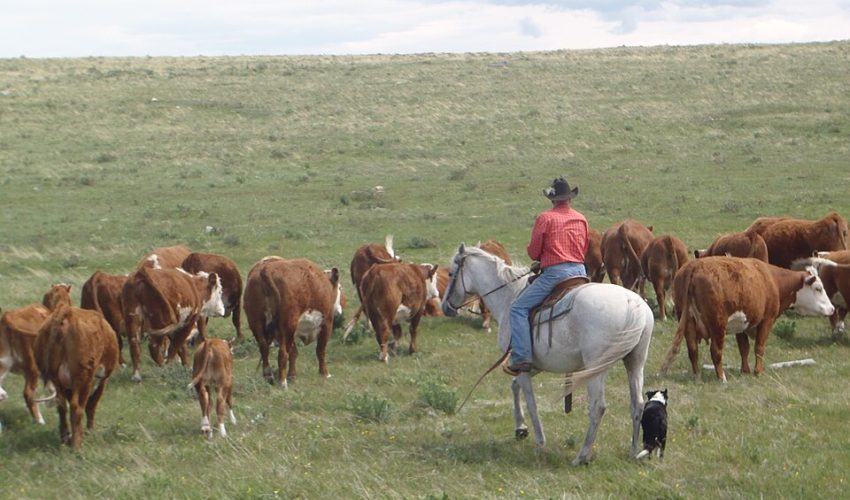Across the American West, ranchers and rural communities are breathing a sigh of relief. In late 2025, the Bureau of Land Management, under new leadership, moved to fully rescind the 2024 Conservation and Landscape Health Rule, often called the Public Lands Rule. Finalized during the Biden administration, this controversial regulation had elevated strict conservation practices to the same level as traditional productive uses like livestock grazing, energy development, and recreation. For many who make their living on public lands, the decision to scrap it entirely represents a return to common sense and a rejection of federal overreach that threatened family operations and local economies.
The excitement stems from the rule’s potential to disrupt decades of balanced land management. Critics argued that it violated the Federal Land Policy and Management Act of 1976 (FLPMA), which mandates multiple use and sustained yield on BLM lands. By introducing “conservation leases” that could lock up vast areas for non-use and prioritizing vague concepts like “intact landscapes,” the rule risked sidelining grazing permits, stalling water infrastructure projects, and creating uncertainty for ranchers who rely on predictable access to allotments. As one Western stakeholder put it, “That’s not conservation, that’s exclusion.” Rescinding the rule restores clarity, protects grazing as a key tool for rangeland health, and reaffirms that local producers, not distant bureaucrats, are often the best stewards of the land.
Ranching groups like the National Cattlemen’s Beef Association, Public Lands Council, and state Farm Bureaus hailed the move as a hard-fought win. They pointed out that the rule ignored input from those who know the land best and could have paved the way for activists to challenge permits or push for widespread restrictions. With the rescission, leases return to the framework of the Taylor Grazing Act, ensuring generational family ranches can continue without new layers of bureaucracy. This is welcome news for communities where public lands grazing supports food production, wildfire prevention through targeted grazing, and rural jobs.
The jubilation over this policy reversal did not come out of nowhere. Tensions between Western ranchers and the BLM have simmered for generations, rooted in shifting priorities on public lands. What began as open-range grazing in the 19th century gave way to regulated permits under the Taylor Grazing Act of 1934, which aimed to prevent overgrazing after years of unchecked use degraded rangelands. For decades, the BLM worked collaboratively with permit holders, recognizing grazing as part of multiple use.
But starting in the 1970s and accelerating with environmental laws like the Endangered Species Act and FLPMA, the agency increasingly incorporated wildlife protection, recreation, and conservation mandates. Ranchers often felt caught in the crossfire: permit reductions to protect species like the desert tortoise, stricter seasonal restrictions, rising fees, and lengthy environmental reviews that delayed range improvements. Many saw these changes as favoring urban environmental interests over rural livelihoods, eroding trust in an agency once viewed as a partner.
This frustration boiled over in high-profile confrontations, most notoriously involving the Bundy family in Nevada. In the 1990s, Cliven Bundy stopped paying grazing fees, citing changes to his allotment tied to tortoise habitat protection. He argued the federal government had no authority over state lands, a view courts repeatedly rejected. By 2014, Bundy owed over $1 million in fees and penalties, leading the BLM to impound his trespassing cattle near Bunkerville.
What followed became a flashpoint. Hundreds of supporters, including armed militia members, rallied to the Bundy ranch, confronting federal agents in a tense standoff. Protesters positioned themselves on overpasses, and fears of violence prompted the BLM to release the cattle and stand down. The event galvanized anti-federal sentiment in the West, with many ranchers sympathizing with Bundy’s defiance even if they disagreed with his tactics.
The saga continued when Bundy sons Ammon and Ryan led a 2016 armed occupation of the Malheur National Wildlife Refuge in Oregon, protesting the treatment of local ranchers and broader land management policies. Though the occupations ended in arrests and one fatality, juries later acquitted many defendants, further highlighting deep divisions.
These standoffs symbolized years of accumulated grievances: perceptions that the BLM prioritizes endangered species or recreation over productive agriculture, imposes burdensome regulations, and disregards local knowledge. While most ranchers comply with permits and work cooperatively on conservation, incidents like the Bundys underscored how far trust had eroded for some.
The rescission of the 2024 rule offers a chance to rebuild that trust. By rejecting mandates that could have further tilted the scales away from multiple use, the BLM signals a commitment to working lands that feed America. Ranchers are not anti-conservation; many view responsible grazing as essential to healthy ecosystems, reducing invasive weeds and wildfire fuel. True stewardship comes from boots on the ground, not top-down edicts that exclude the people who depend on these lands.
As the West faces drought, wildfire, and economic pressures, this policy shift ensures public lands remain productive and accessible. For ranchers raising cattle on BLM allotments, it’s a victory worth celebrating, one that honors their role as the original conservationists of the American range. The fight for balanced management continues, but for now, the working West has reason to be optimistic.


